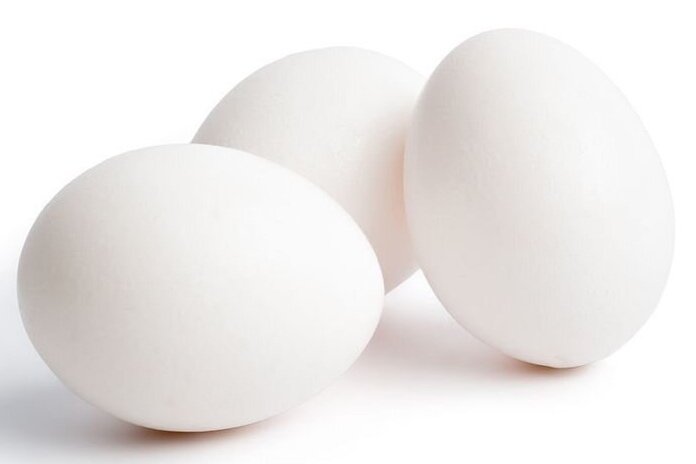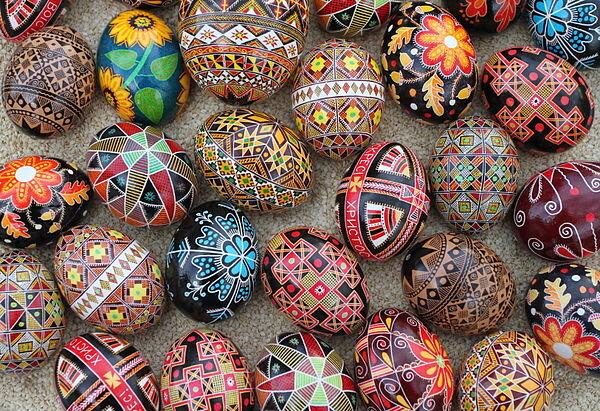Right now, in countries across the northern hemisphere- many cultures are welcoming the season of Spring and all the special things it brings.
What changes SIGNIFY (show) this seasonal shift?
(climate, birth, growth)
Many cultures celebrate the end of Winter/ beginning of Spring in similar ways.
Can you think of some examples of spring traditions that are cross-cultural (something people in many cultures do) or culturally-specific (something one culture does)?
In the Ukraine, the season of Spring is celebrated by decorating an object that is a SYMBOL for new life.
Pysanky
Pysanky “peh-sun-keh” is a very old egg-decorating tradition in Ukraine and other Eastern European countries. Ukrainian artisans (usually older women known as Babushkas) have been creating Pysanky each winter for hundreds of years. These eggs are given as gifts to friends and neighbors upon the first arrival of warm weather, in celebration of hope and new beginnings.
Let's explore how the design and process of this art form are unique!
Compare/ Contrast the design of Pysanky below with the "Easter Eggs" that many people decorate in North America.
(Notice bold rather than pastel colors, geometric shapes and pattern, lack of spring animal imagery)
How it’s Made
The word Pysanky comes from the Ukrainain word "pysanka" which means "to write."
To create these tiny 3-D paintings, artisans first hollow real eggs by poking tiny holes in the end and draining it's contents. (usually the egg yolk and white are eaten, not wasted!)
They then gently draw intricate designs on the fragile eggshell with small stylus called a KITSKA ("keet-skah"). Using the kitska, they create segments and patterns onto the surface of the egg with liquid beeswax.
Creating Pysanky is a WAX-RESIST process.
As the wax dries, it creates a seal over the white eggshell. The artistan will now dip the egg into the first color of dye. The lines they have drawn in beeswax resist the dye.
After drawing and dipping numerous times, the artisan will hold the egg over a lit candle and burn away all the beeswax. Only the dyed areas of the eggshell that were not protected by beeswax lines will still remain.
Watch the video below to take a closer look at this process!
Traditional Motifs
These are traditional Pysanky designs. Ukrainian artisans have been decorating their Pysanky with geometric designs such as these for hundreds of years.
Each design has dividing lines that create SEGMENTS. Pysanky designs are often divided into Halves or Quarters (Quadrants).
Nearly all Pysanky designs include REPETITION- simple repeated lines or shapes.
Often, this repetition creates a type of SYMMETRY or REFLECTION.
Most Pysanky designs utilize bold, contrasting tones such as black, red, orange, yellow and green. Light, pastel tones are rarely used.
Collection Connection
The OJAC holds a few antique Pysanky in its study collection. They were created in Eastern Eurpope around a century ago.
Look Closely:
Which of the eggs on the left has been dipped in dye once? Which was dipped twice?
Think:
Considering traditional Pysanky color-schemes, which of these eggs do you feel has had the most sun-exposure and color fading over time?
What special things do you think the museum does to PRESERVE an object this fragile?
Pysanky are such a lovely Ukrainain tradition of friendship and goodwill towards neighbors.
I felt this spring/ Easter season in particular was a perfect time to celebrate both that theme and the history of that beautiful country.
Erin Whitmore
Education Director






